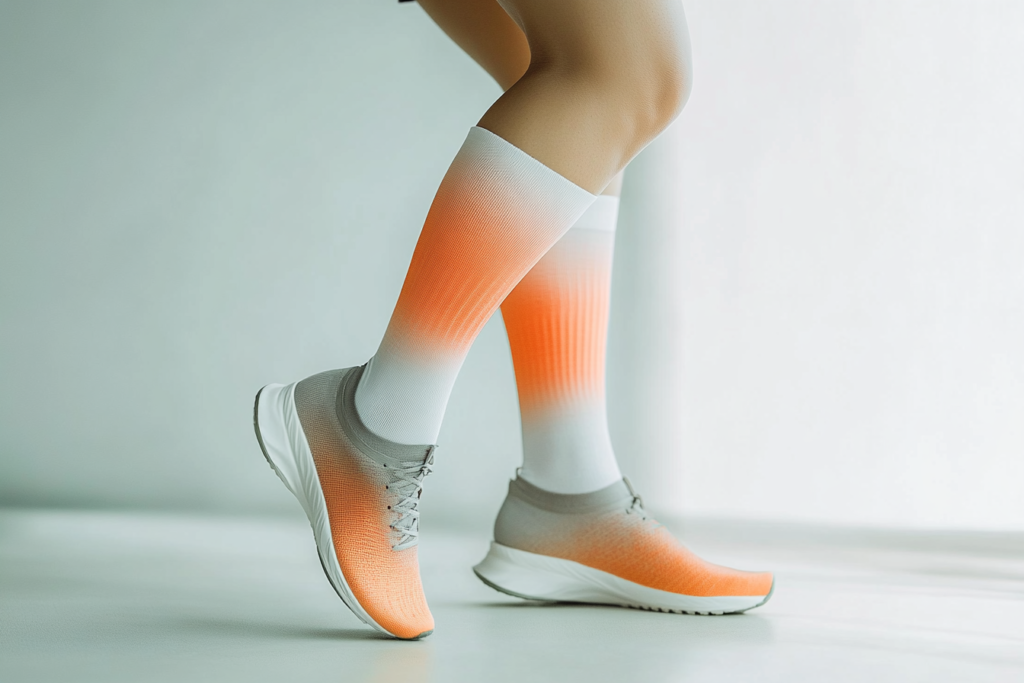
Keeping your feet dry and comfy needs more than just socks. Breathable socks use special materials and smart designs to control air and sweat. These socks are not only for comfort—they help keep your feet healthy.
- The socks market is growing fast because people want better socks like breathable ones.
- Special socks, like sweat-wicking sports socks, are popular as people care more about comfort and clean feet.
Breathable socks mix science with usefulness, keeping your feet healthy and strong during any activity.
Key Takeaways
- Breathable socks are made with special fabrics to keep feet dry.
- Merino wool is great for keeping feet cool and absorbing sweat.
- Synthetic fibers like CoolMax® dry quickly and pull sweat away.
- Mesh areas in socks improve airflow and help stop sweating.
- Good seam placement helps socks stay dry and feel comfortable.
- Dry socks prevent blisters and skin problems during exercise or sports.
- Picking socks based on your activity makes you feel better and perform well.
- Avoid socks that stay wet or cause blisters to keep feet healthy.
What Makes a Sock Breathable at the Material Level?
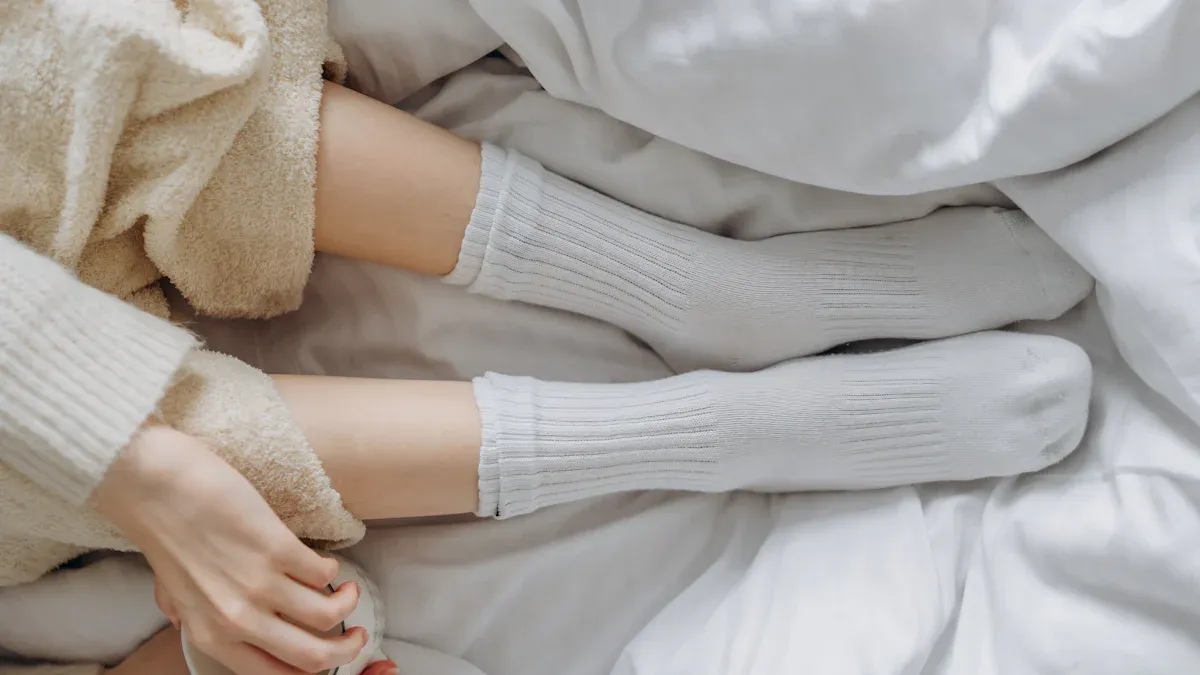
Breathable socks use special materials to manage sweat and airflow. The type of fibers and fabric coatings is very important. Let’s see how different materials help socks stay breathable.
How Natural Fibers Like Merino Wool Improve Breathability
Merino wool is great for making socks breathable. It helps keep feet comfy in both hot and cold weather. This wool absorbs sweat and turns it into vapor, so your feet don’t feel sticky. Unlike cotton, which holds onto moisture, Merino wool dries faster. It can hold up to 30% of its weight in water without feeling wet. This makes it perfect for outdoor lovers and athletes.
Here are some benefits of Merino wool:
- It keeps feet at the right temperature in any weather.
- It pulls sweat away, helping to stop blisters.
- It feels softer than synthetic materials in all climates.
How Synthetic Blends Optimize Moisture Management
Synthetic fibers like polyester and nylon are made to move sweat away. These materials don’t soak up water, so feet stay dry during tough activities. Synthetic blends dry faster than natural fibers. For example, CoolMax® fibers are designed to wick sweat quickly by spreading it out for faster drying.
Here’s a simple comparison of fibers and how they handle moisture:
| Fiber Type | Holds Moisture? | Moves Sweat? | Notes |
|---|---|---|---|
| Cotton | Yes, a lot | Not much | Stays wet longer than synthetic fibers. |
| Wool | Some | Okay | Absorbs sweat but still wicks a bit. |
| Acrylic | No | Very well | Moves sweat fast, doesn’t hold water. |
| CoolMax® | Almost none | Excellent | Made to wick sweat and dry quickly. |
| Polypropylene | Almost none | Okay | Pushes water away but wicks less. |
Synthetic blends mix durability with sweat-wicking power. This makes them a top pick for socks used in sports or other active tasks.
The Role of Fabric Treatments and Technologies
Special fabric treatments make socks even more breathable. These treatments help wick sweat, stop odors, and last longer. For example, antimicrobial coatings stop bacteria from growing, keeping socks fresh. These treatments really improve comfort and cleanliness.
Here’s how fabrics rank in breathability:
| Fabric Type | Breathability Rank |
|---|---|
| Cotton (CO) | Good |
| Bamboo (BB) | Better than PAC |
| Acrylic (PAC) | Least breathable |
These advancements help socks stay dry and comfy for a long time. Whether you’re hiking, running, or just walking, the right socks make a big difference.
How Does Sock Design Help Airflow and Sweat Control?

The way socks are made affects airflow and sweat control. Features like mesh panels and cushioning levels help keep feet dry. Let’s look at how sock design improves breathability.
Why Mesh Panels Help Airflow
Mesh panels are important for letting air flow through socks. These panels are placed where air is needed most, like on top of the foot. They help cool your feet and reduce sweat buildup.
- Mesh panels can boost airflow by 50%.
- Better airflow lowers sweat, keeping feet healthy.
- Athletes benefit from mesh panels during intense activities.
More airflow keeps feet cooler and stops blisters and bad smells caused by sweat.
How Seam Placement Helps Sweat Dry Faster
Seam placement affects how socks handle sweat. Bad seams can cause pressure and block airflow. Seamless or flat seams let sweat dry faster by removing barriers.
For example, seamless toes and strong heel seams let sweat escape. This makes socks more comfy and stops blisters. Good seam placement helps socks fit and manage sweat better.
Cushioning and Breathability: Finding the Right Mix
Cushioning adds comfort but can block airflow. New designs show you can have both. Testing shows some cushioned socks still breathe well, like Darn Tough Full Cushion.
- Brands like Darn Tough add vents to improve airflow.
- Thick socks like Darn Tough Full Cushion work well in heat.
The trick is balancing cushioning with vents. This keeps socks comfy for workouts while controlling sweat.
Studies using data tools like R2 and SSD prove these designs work. They show how sock design affects airflow and moisture control.
By focusing on mesh panels, seams, and cushioning, sock makers create breathable, comfy socks.
Why Is Moisture Control So Important for Athletic Performance?
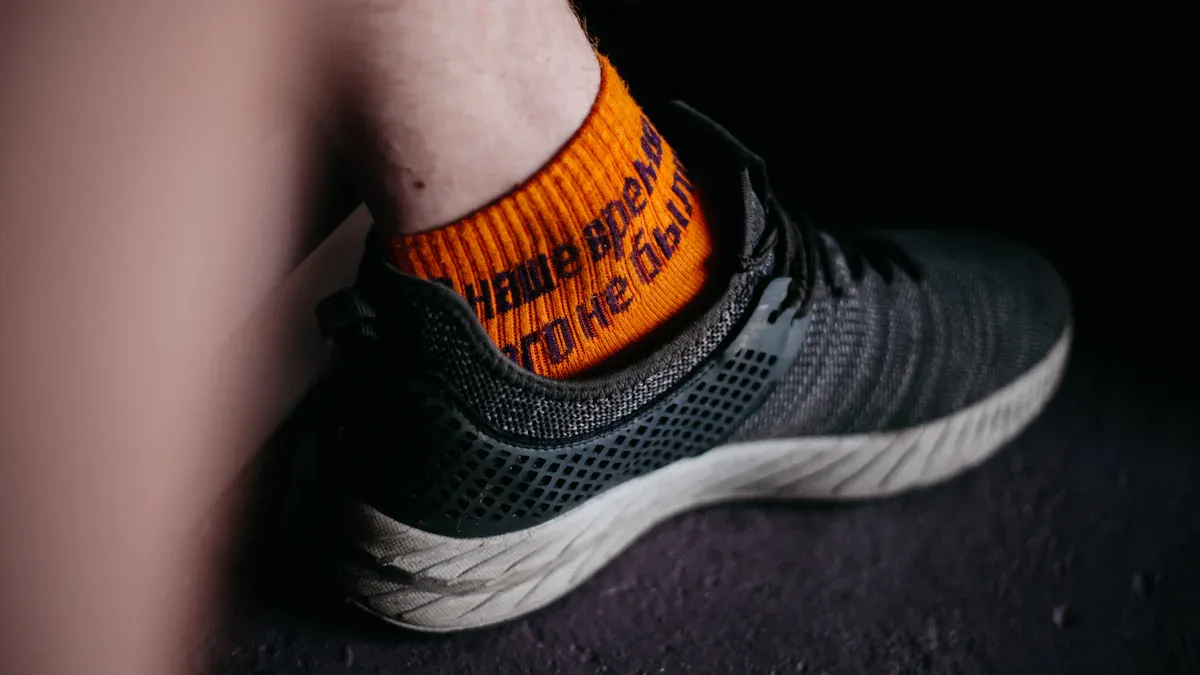
Stopping Blisters and Skin Problems with Dry Feet
Dry feet help stop blisters and skin problems during exercise. Wet socks cause sweat to build up, making skin rub against fabric. This rubbing can create painful blisters that slow athletes down. Breathable socks with sweat-wicking materials pull sweat away from the skin. This lowers the chance of blisters.
Studies show how socks help prevent blisters. Here’s a quick summary:
| Study Focus | Key Findings |
|---|---|
| How blisters form | Dry fabrics lower the chance of getting blisters. |
| Athlete feedback and body response | Sweat-wicking socks stop blisters and skin problems. |
| Boots and socks together | Sweat-wicking socks reduce blister numbers and pain. |
| How friction causes blisters | Good sock materials stop rubbing by keeping feet dry. |
These studies show why moisture control in socks matters. Dry feet let you focus on your sport without painful distractions.
Staying Cool and Boosting Endurance
Moisture control helps keep your body cool during workouts. Sweat traps heat, making feet hot and uncomfortable. This can lower your energy and endurance. Socks with sweat-wicking tech keep feet cooler, helping you work harder.
Endurance studies give useful tips:
- Stay hydrated. Check hydration daily using weight, urine, and thirst.
- Cool down before workouts with ice drinks to lower body heat.
- Train in heat slowly over 14 days with light exercises.
- Start workouts hydrated to avoid overheating and perform better.
Using breathable socks and staying hydrated keeps you cool and strong, even in tough conditions.
Feeling Comfortable for Longer Workouts
Comfort is key for long training sessions. Socks that handle sweat well stop dampness and rubbing. Breathable socks make workouts more enjoyable by keeping feet comfy and dry.
Surveys and research show how moisture control improves comfort:
- Special materials like sweat-wicking fabrics and mesh boost performance.
- Coolmax and Merino wool dry faster, improving satisfaction by 40%.
- Anti-rub designs, like Exosocks, stop blisters and add comfort.
These features make breathable socks great for long workouts. They keep feet dry and comfy, so you can stay focused and strong for longer.
Which Technologies Are Leading the Innovation in Breathable Socks?
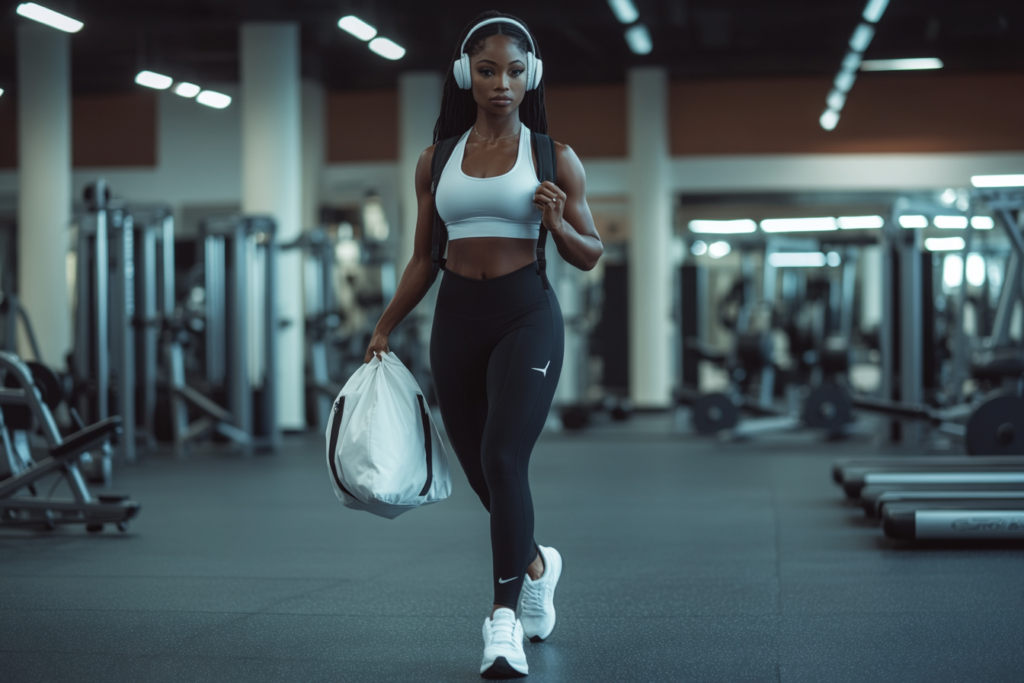
Nanotechnology and Sweat-Wicking Fibers
Nanotechnology has changed how socks handle sweat. Tiny materials are added to fabrics to improve sweat-wicking. For example, ISWD materials wick sweat 23.22% better than others like AgNP (18.7%) and ZnO (18.05%). These materials pull sweat away from skin, keeping feet dry during tough activities.
Other nanomaterials, like rGO and CNT, also help manage sweat. But ISWD works best for keeping feet dry and comfy. Nanotechnology makes socks dry faster, lowering the chance of blisters. This tech is a big win for athletes and outdoor fans.
Smart Yarns That Adapt to Temperature
Smart yarns are special fibers that adjust to weather. They keep feet warm in winter and cool in summer. Some even let users control temperature with a phone app.
These yarns wick sweat in heat and hold warmth in cold. They are great for people who enjoy outdoor activities all year. By reacting to weather, smart yarns make socks comfy in any condition.
Antimicrobial Treatments for Odor Control
Stopping bad smells is important for socks. Antimicrobial treatments, like silver ions and zinc pyrithione, kill odor-causing bacteria. Tests show these treatments work even after 50 washes.
These treatments keep socks fresh and clean for longer. They also improve foot hygiene, making socks more comfortable. With this technology, socks stay odor-free even after long use.
How Can You Pick the Best Breathable Socks for Your Needs?
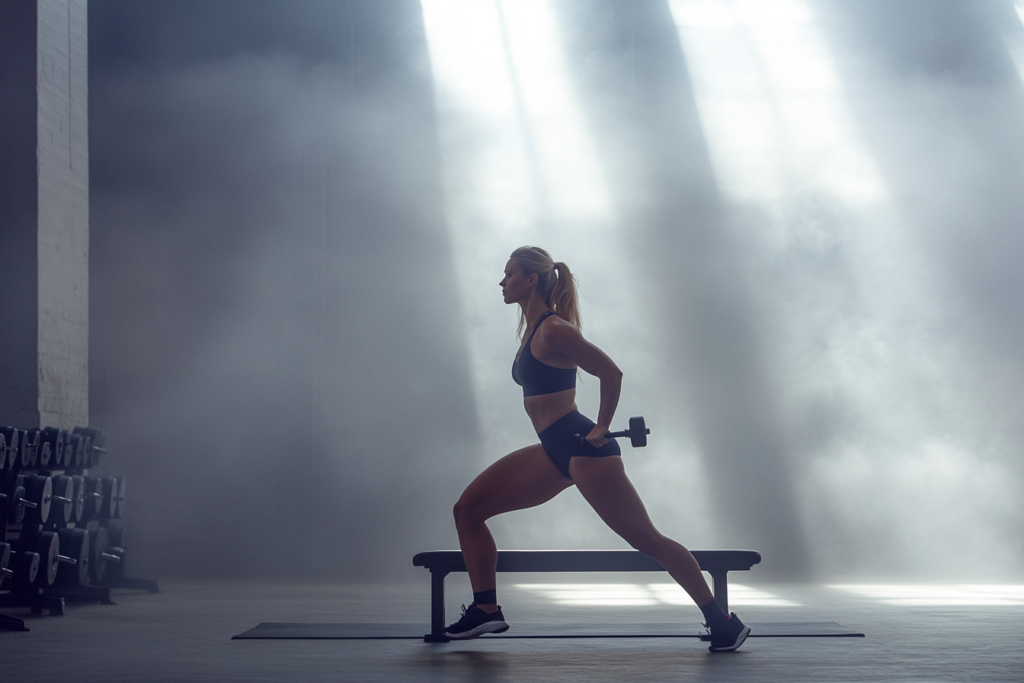
Things to Think About Based on Your Activity
The right socks depend on what you’ll do. Different activities need special features for comfort and performance. For example, runners need moisture-wicking materials to keep feet dry on long runs. Hikers may want extra padding for rough trails. Compression levels also matter. Light compression is good for daily wear. Strong compression helps blood flow during hard workouts.
When picking socks, think about these things:
- Moisture-wicking materials: Keep feet dry during exercise.
- Compression zones: Help athletes avoid swelling and stay strong.
- Seamless toes and padding: Add comfort for high-impact activities.
Choosing socks that match your activity keeps you comfy and ready.
Signs Your Socks Aren’t Breathable Enough
Not all socks are made the same. If your feet feel wet or sore, your socks might not breathe well. Problems like too much sweat, blisters, or bad smells are common signs. Socks that don’t wick sweat trap moisture, causing skin irritation.
Watch for these warning signs:
- Persistent dampness: Shows poor sweat control.
- Frequent blisters: Means sweat is causing friction.
- Odor buildup: Suggests no antimicrobial protection.
Switching to breathable socks can fix these problems. Look for features like mesh panels, sweat-wicking fibers, and odor-fighting treatments to keep feet fresh.
Brands Known for Great Breathable Socks
Some brands are famous for making breathable socks. They use smart designs and advanced materials for top performance. For example, Darn Tough makes cushioned socks with great airflow. Smartwool uses Merino wool to manage sweat naturally. Bombas and Balega focus on seamless designs and compression zones.
| Brand | Key Features |
|---|---|
| Darn Tough | Cushioned socks with great airflow |
| Smartwool | Merino wool for sweat and temperature control |
| Bombas | Seamless designs with sweat-wicking fibers |
| Balega | Compression zones to stop blisters |
Buying socks from trusted brands gives you comfort and durability. These brands offer options for casual wear and tough workouts.
Conclusion
Breathable socks aren’t just fancy—they’re super useful. They use special materials and clever designs to keep your feet comfy, dry, and strong. For instance, mixing Merino wool with synthetic fibers makes socks softer and better at handling sweat. Adding nylon and elastane helps them stretch and last longer. These features make breathable socks a must-have for healthy feet and active lifestyles.
| Benefit | What It Does |
|---|---|
| Comfort | Merino wool blends feel soft and pull sweat away, keeping feet dry. |
| Performance | Nylon and elastane make socks stretchy and tough, perfect for sports and sweat control. |
| Durability | Cotton mixed with strong synthetics resists wear and lasts longer. |
Learning how these socks work helps you pick the best ones. Stay comfy and strong, starting with your feet!
FAQ
What are breathable socks, and why are they important?
Breathable socks are made to control sweat and airflow. They keep feet dry, stop bad smells, and prevent blisters. These socks are great for comfort, hygiene, and sports.
Can breathable socks reduce foot odor?
Yes, they can! Many have special treatments to stop bacteria growth. This helps keep your feet fresh and free of bad smells, even after long use.
Can I wear breathable socks in all seasons?
Yes, you can. Materials like Merino wool adjust to the weather. They keep feet warm in winter and cool in summer. Smart yarns are great for year-round comfort.
How can I tell if my socks are breathable?
Look for features like mesh panels and sweat-wicking fabrics. Seamless designs also help. If your feet feel wet or get blisters, your socks may not breathe well.
Do breathable socks last as long as regular ones?
Yes, they do, and sometimes even longer. They are made with strong materials like nylon and elastane. These materials make them durable and long-lasting.
Are breathable socks worth buying?
Yes, they are. They make your feet more comfortable and prevent problems. They also help you perform better in sports. It’s a small cost for big benefits.
Can I use breathable socks for everyday activities?
Definitely! Breathable socks work well for daily wear, work, or casual outings. They keep your feet dry and comfy no matter what you’re doing.
What are some good brands for breathable socks?
Brands like Darn Tough, Smartwool, and Bombas are great choices. They use smart designs and materials to make socks that are comfy and breathable.
Related
1.The Effect of Two Sock Fabrics on Physiological Parameters Associated with Blister Incidence: A Laboratory Study →
2.What Outdoor Brands Get Right About Sock Breathability →
3.Evaluation of Properties of Sports Socks Made with Synthetic and Biodegradable Yarn →
4.Warm in Winter, Cool in Summer. Breathable Socks All Year Round →
5.Global Socks Market Size, Share, and Trends Analysis Report – Industry Overview and Forecast to 2032 →
